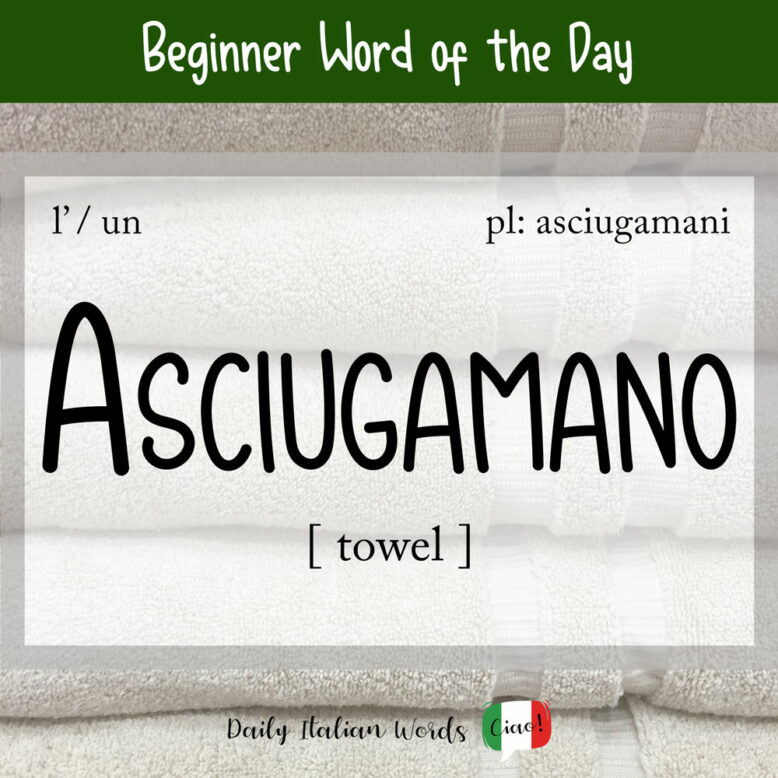Whenever you have a shower, jump in the bath or visit the beach, one thing you should never forget is your trusty asciugamano (masculine, plural: asciugamani), which is the Italian word for towel.

A compound word made up of the verb asciugare (to dry) and mano (hand), it literally translates as hand-dryer!
Mi sono asciugato le mani con l’asciugamano.
I dried my hands with the towel.
There are many different kinds of towels that serve different purposes. You have the standard fluffy bath towel (asciugamano da bagno), the large beach towel (asciugamano da spiaggia), and the smaller hand towel (asciugamano per le mani) and washcloth/facecloth (asciugamano da viso).

Another possible word for the last towel on the list is salvietta (or the diminutive salviettina) which translates as both napkin/serviette and as a small towel used to wash one’s face. Keep in mind however that washcloths and flannels aren’t as popular in Italy as they are in the US and the UK: they tend to prefer sponges (spugne) and loofas (spugne esfolianti).
Finally, the napkin that you use while eating is called tovagliolo.
Domani dobbiamo andare a comprare due asciugamani da spiaggia, un asciugamano da bagno, tre salviettine, due spugne e quattro tovaglioli.
Tomorrow we need to buy two beach towels, one bath towel, three serviettes, two sponges and four napkins.
Heather Broster is a graduate with honours in linguistics from the University of Western Ontario. She is an aspiring polyglot, proficient in English and Italian, as well as Japanese, Welsh, and French to varying degrees of fluency. Originally from Toronto, Heather has resided in various countries, notably Italy for a period of six years. Her primary focus lies in the fields of language acquisition, education, and bilingual instruction.


